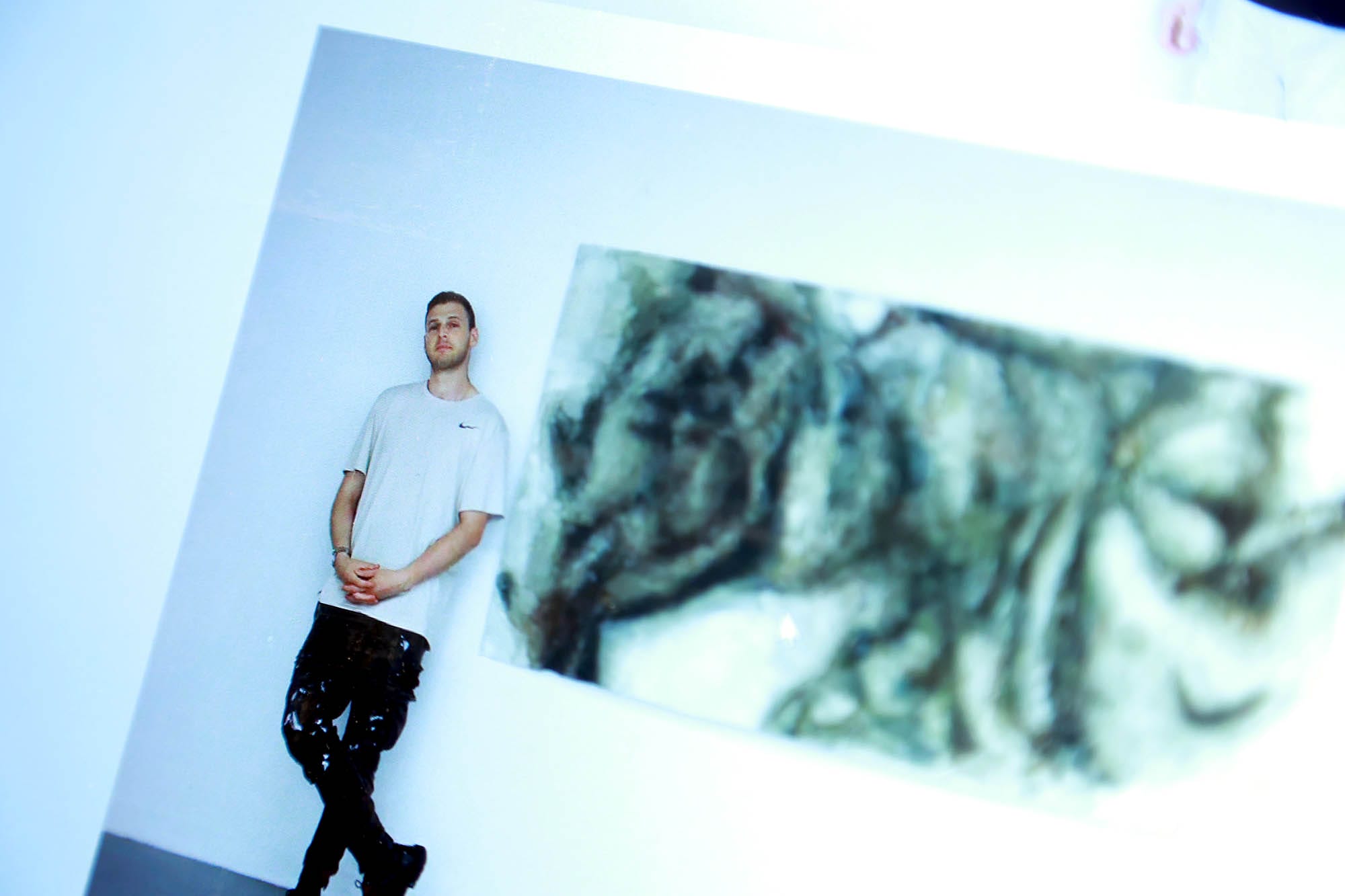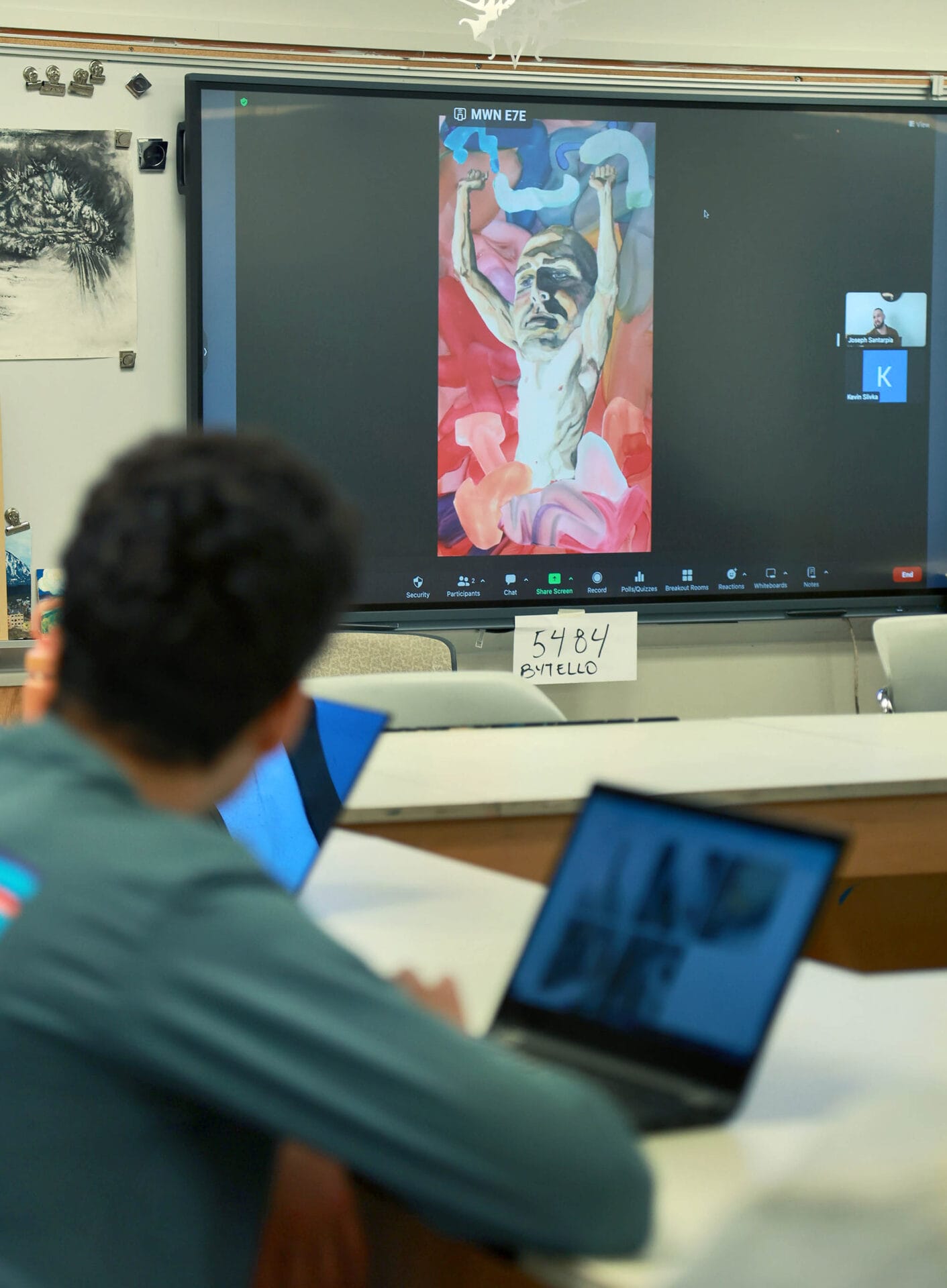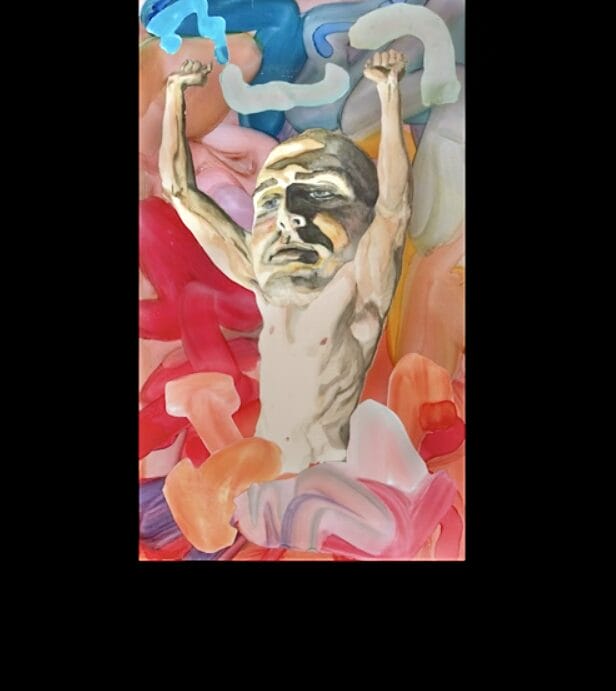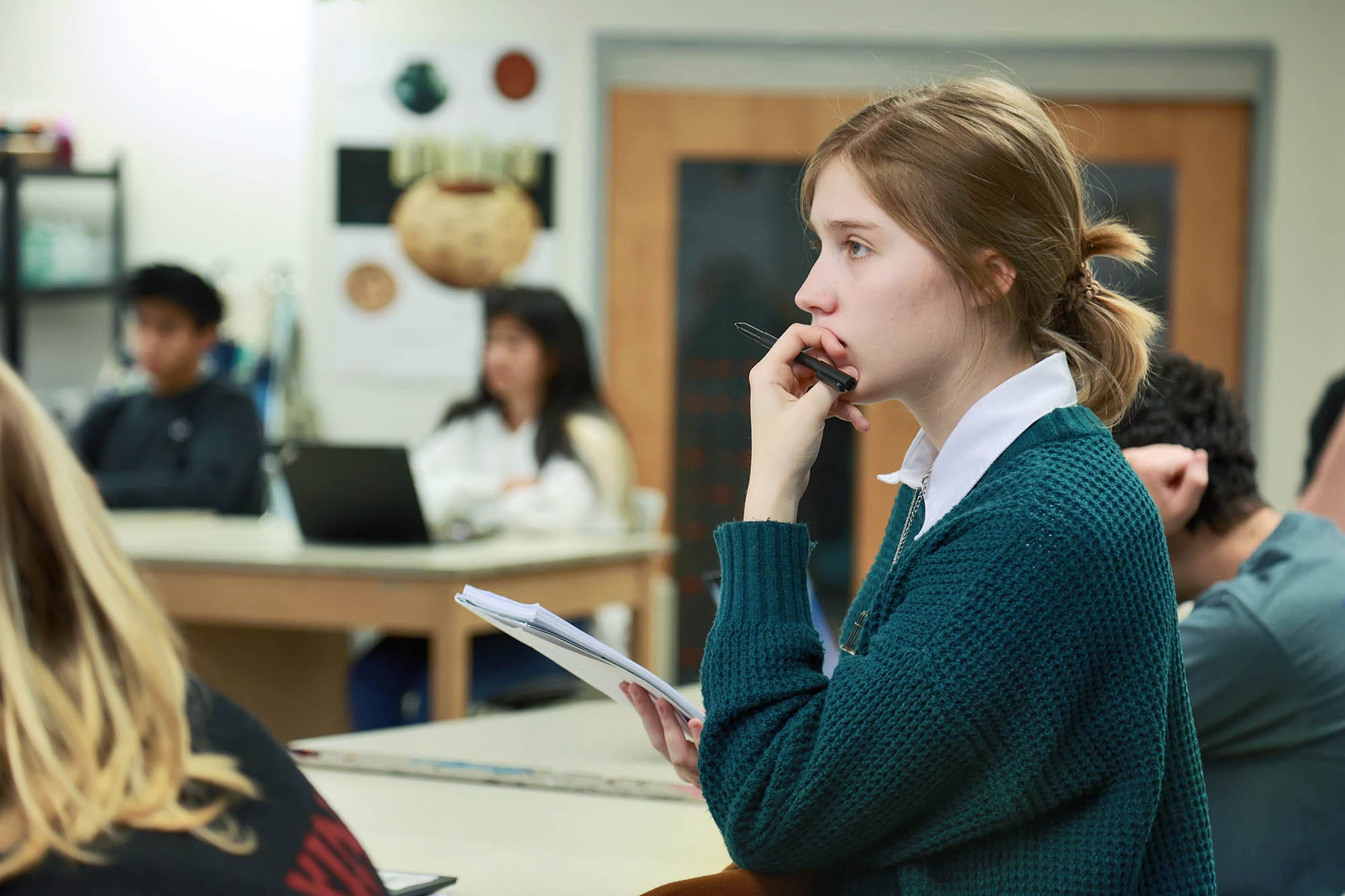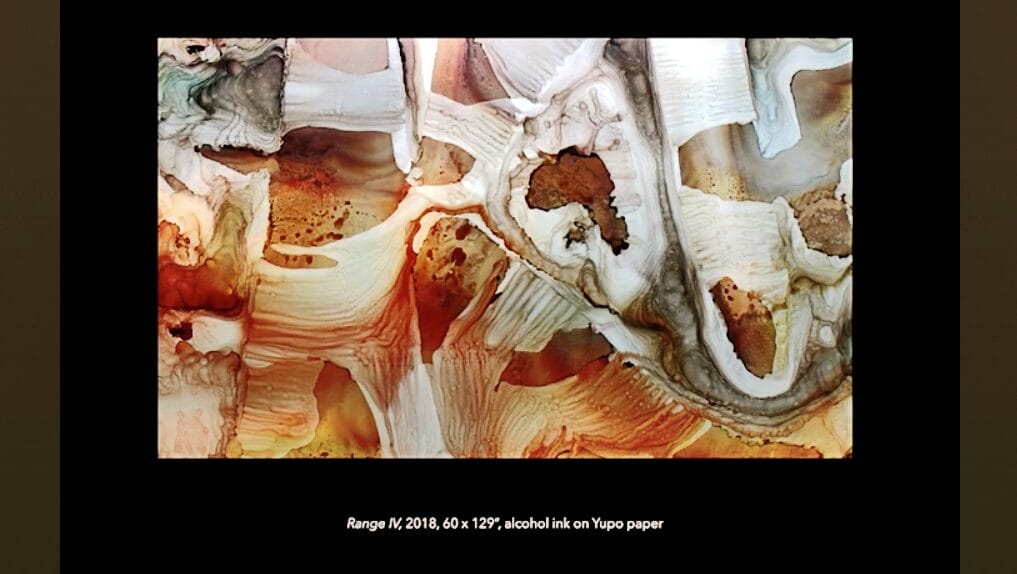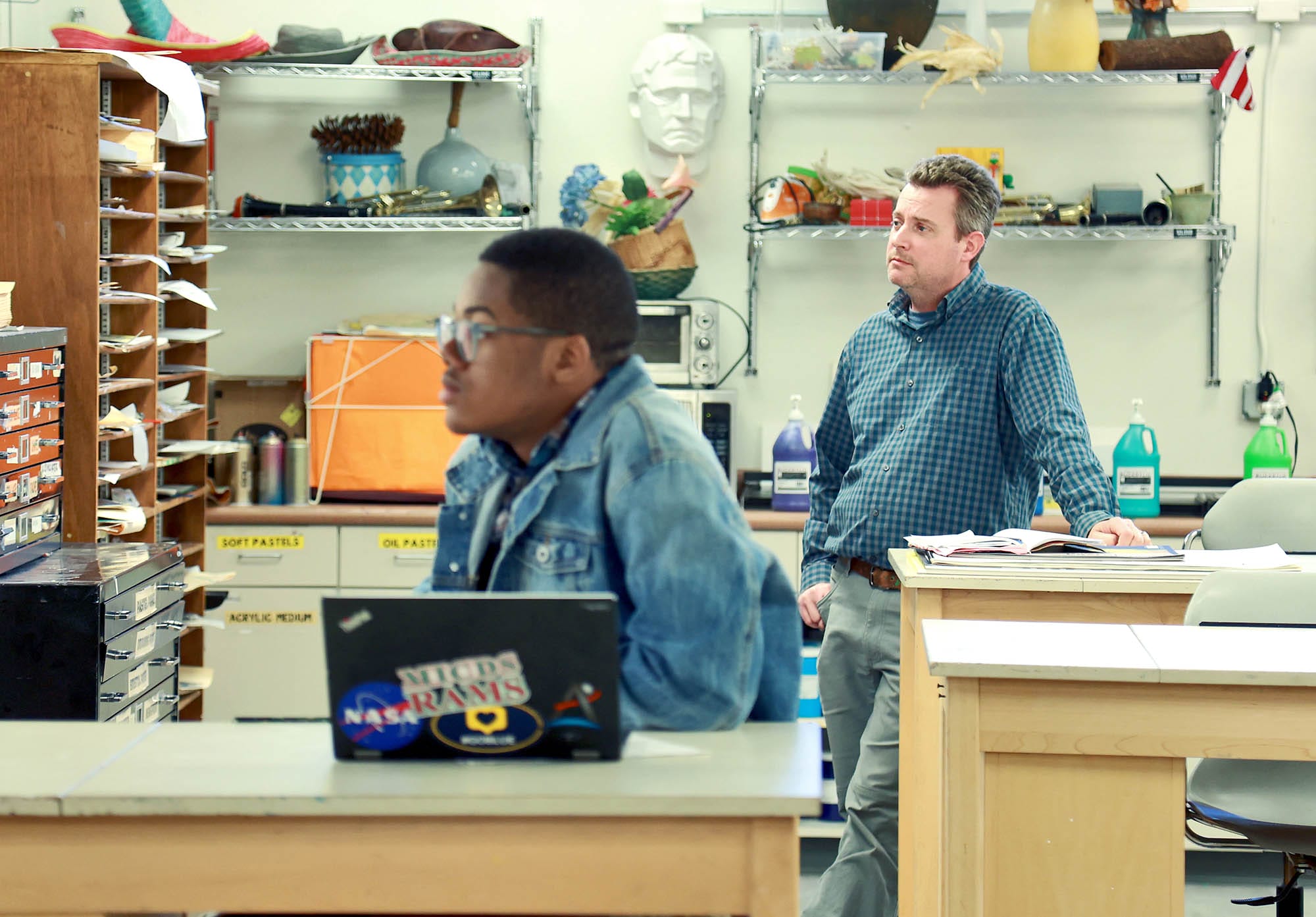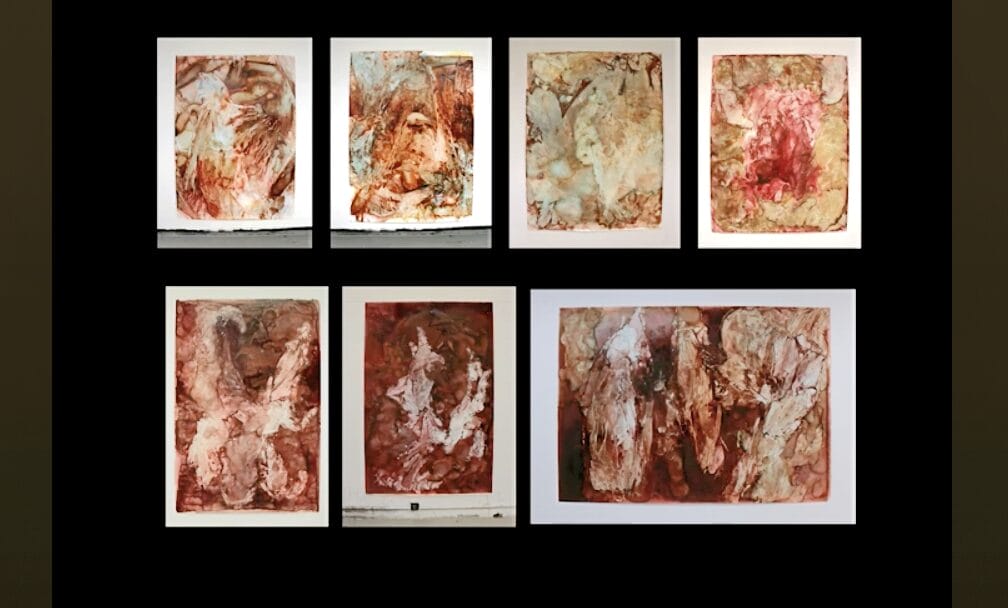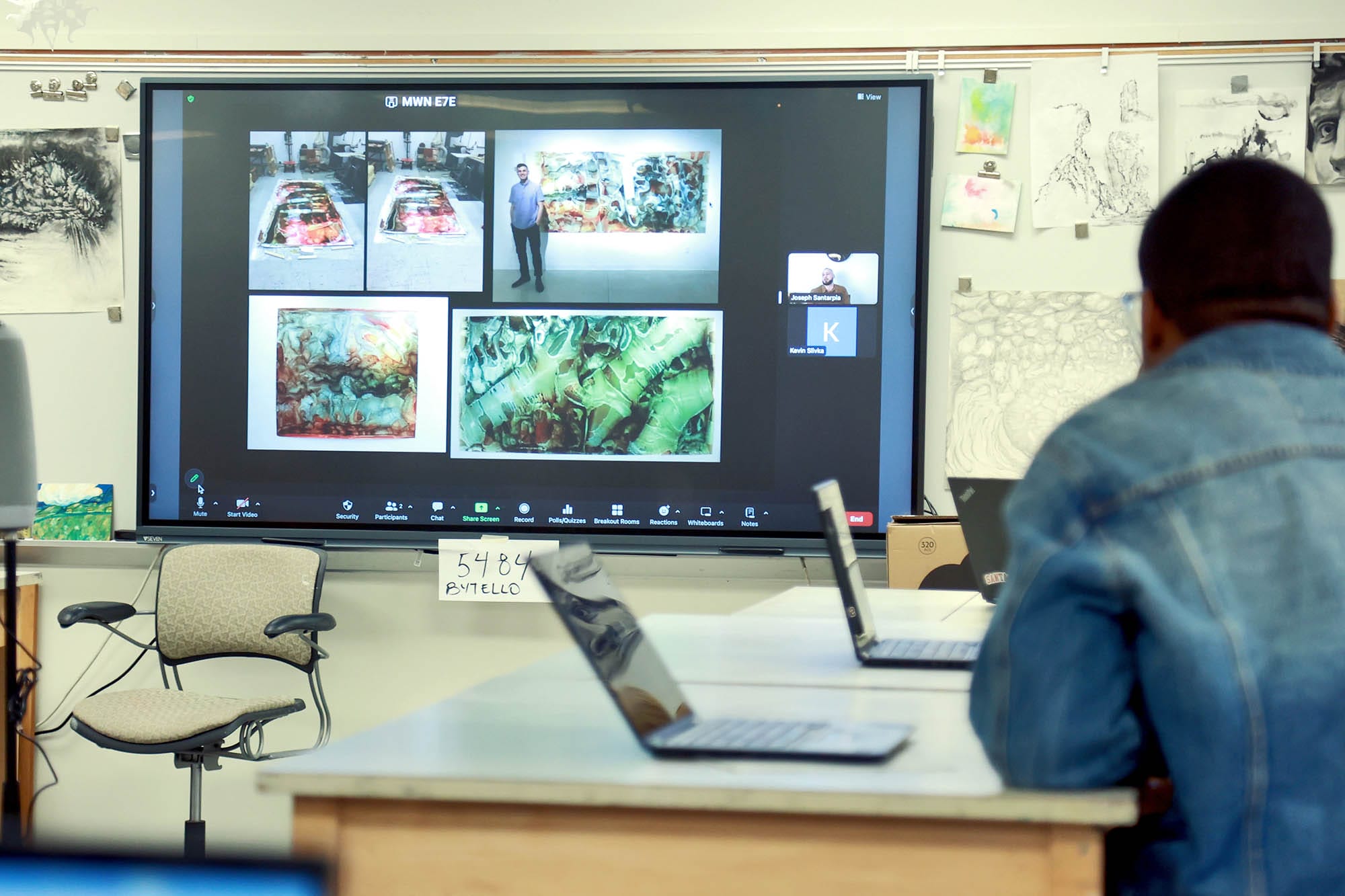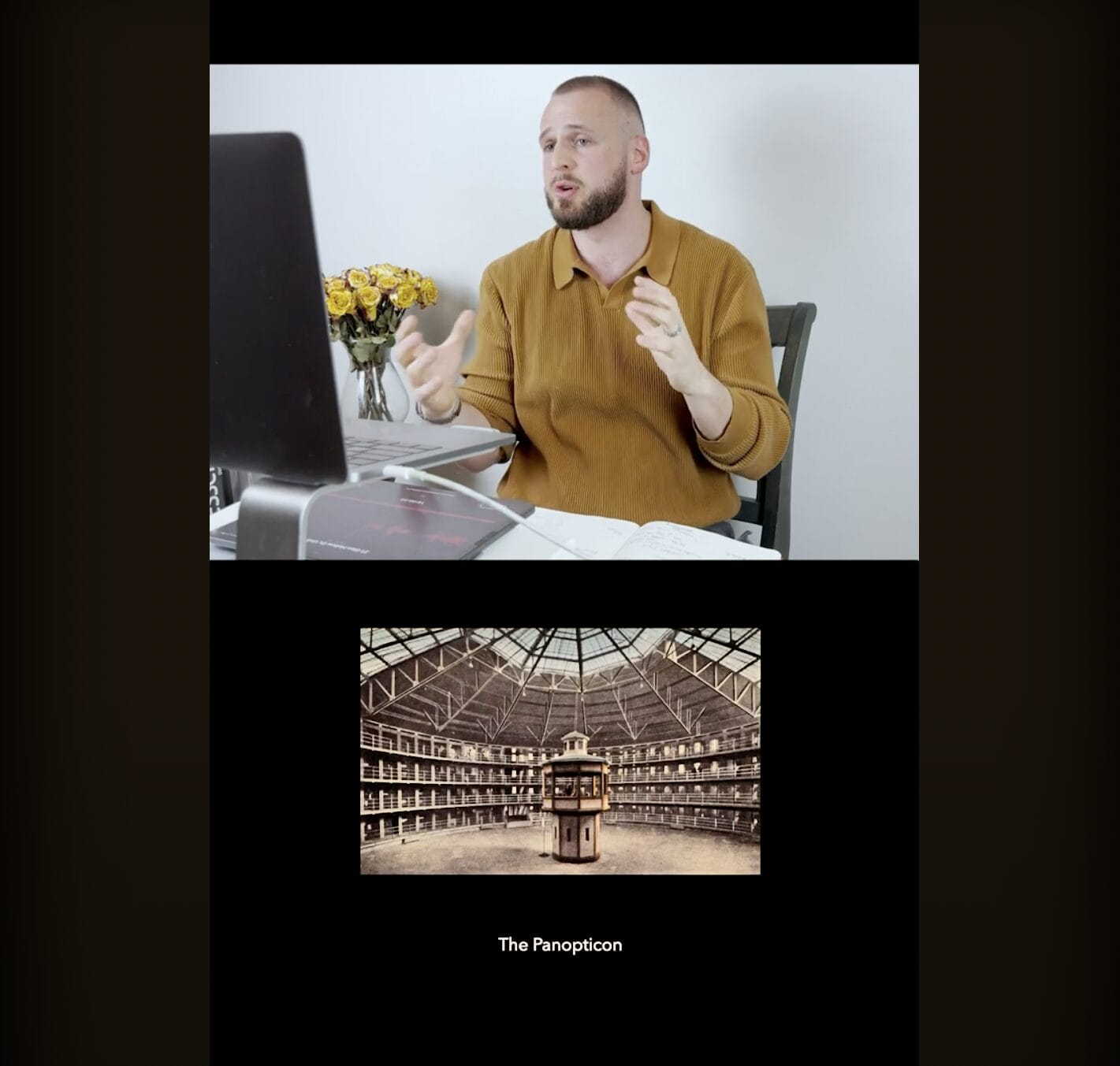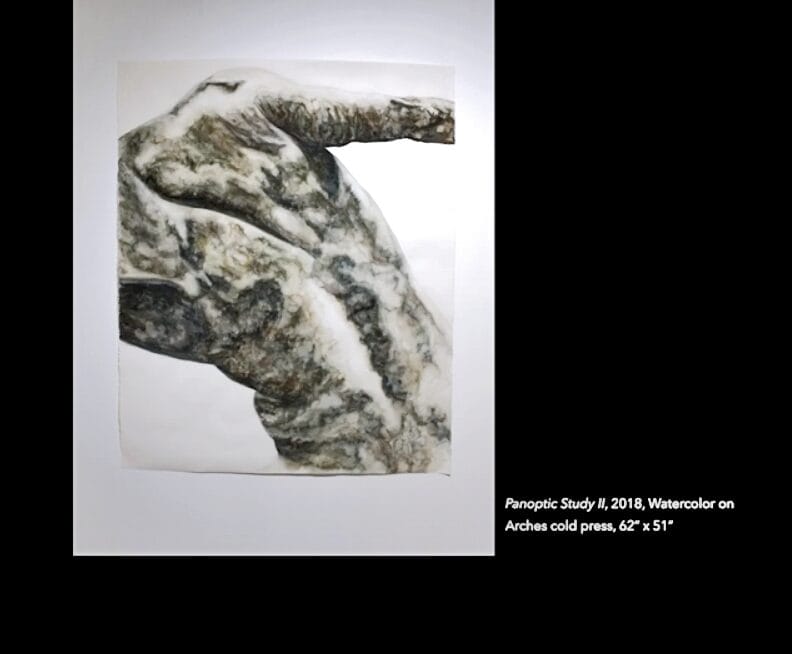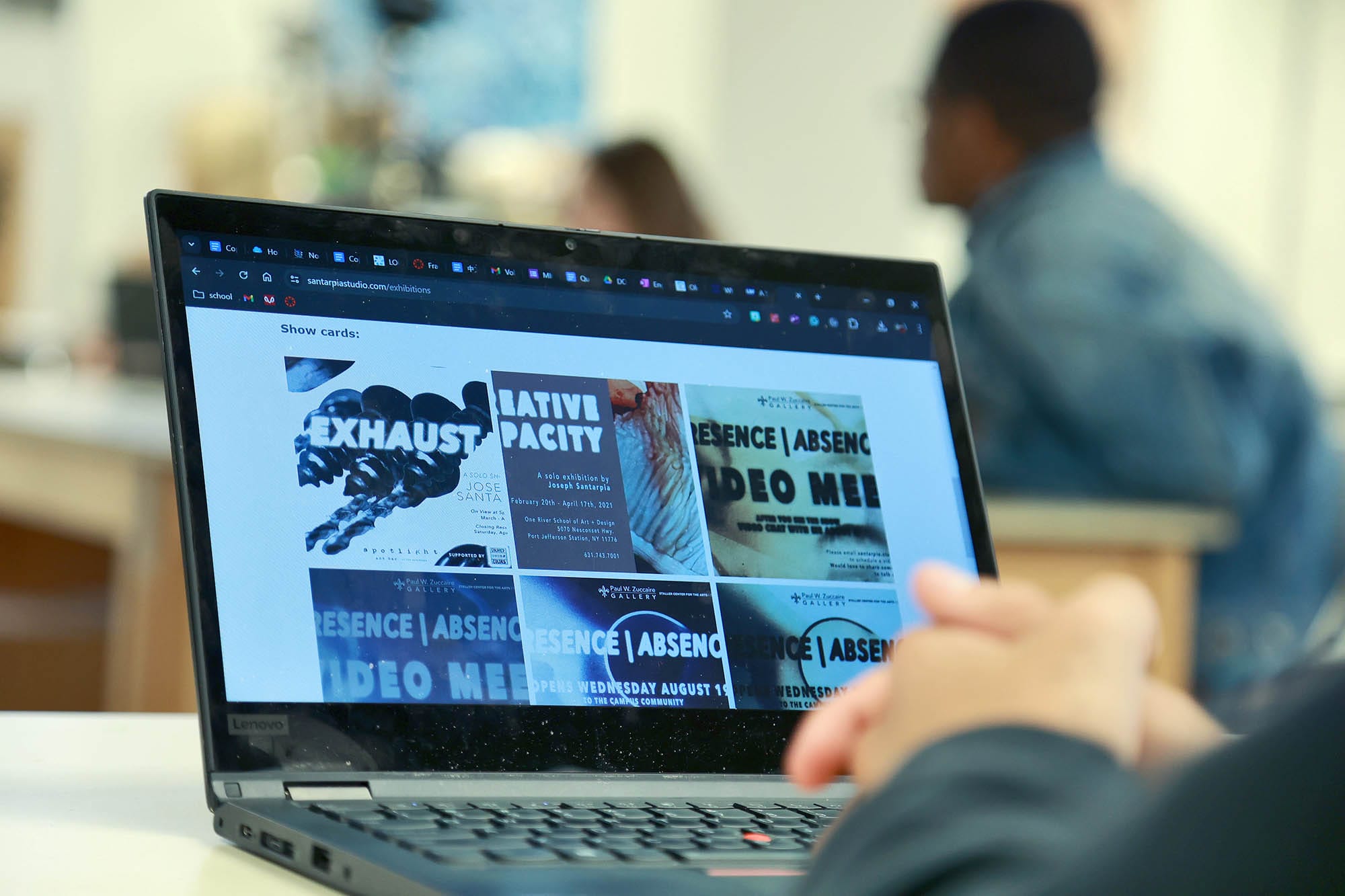Art can inspire and motivate people, but what inspires and motivates an artist? Dr. Kevin Slivka, Upper School Fine Arts Teacher, invited artist Joe Santarpia to speak to his drawing class where students heard about creating art and expressing a unique voice through one’s work. “I know Joe from my service as an Assistant Professor at the State University of New York at New Paltz (SUNY) while Joe was an undergraduate in the Art Education program,” says Slivka. Santarpia was “very receptive to feedback,” Slivka says, and “very thoughtful in his approaches to art and education, while keeping his students in mind as he developed his practice.” Santarpia uses those qualities in his role as professor at Stony Brook University on Long Island in New York, and it was with those qualities in mind that Slivka asked him to address the class.
Santarpia loved art while he was in high school, but was a basketball standout looking forward to playing in college. “I was definitely more into sports in high school,” he says, « [but] I loved AP Art. It was the best. [It was] the first true studio experience.” Santarpia began to focus primarily on his art following back surgery, where he had vertebrae fused together. “My relationship to my body completely changed,” he said. How his personal experience has shaped his art was a major topic of his talk with Slivka’s class. After multiple medical procedures, the associated recovery time, and the lasting effects that he continues to manage, Santarpia admits, “It’s still influencing my artwork.”
Santarpia urged the students to “use your circumstance in your art practice” and asked them to find a way to integrate their personal experiences to tell their own stories through art. Much of his work has an anatomic quality. His paintings and collage pieces focus on the deconstructed human form and its anatomy as it relates to pain. Many of his pieces intimate tissue, sinew, muscle and bone, flesh and wound, blood and pain. They are abstract but never gory. In his series Panoptes, Santarpia creates paintings of the human form inspired by the psychologically fracturing panopticon prison system, substituting the invisible but oppressive panopticon correction officer for pain that exhibits the same qualities.
Finding your voice as an artist can be challenging, but finding an audience for your work can often be equally difficult. “I reached out to Joe because he strongly self-advocates his works and exhibitions, but also has a breadth in terms of navigating numerous institutional structures,” says Slivka. Commercial success as an artist may be elusive, and struggling to get your work in front of people may be disheartening, but Santarpia reminds students that the work of creating art is valuable and has meaning to the artist. “If some gallery or some person sees [my work] as valuable – great. If they don’t see [my work] as valuable? I do,” he says.
“Not everyone will consider your work valuable or want to show it. That doesn’t mean you stop.”
